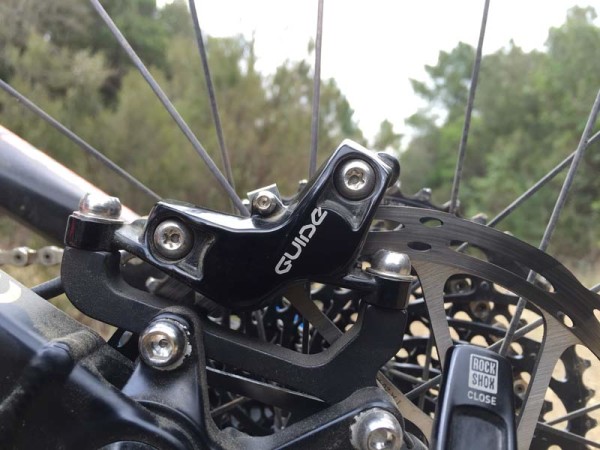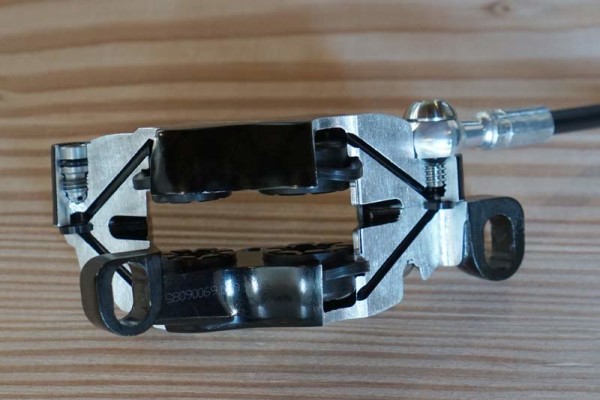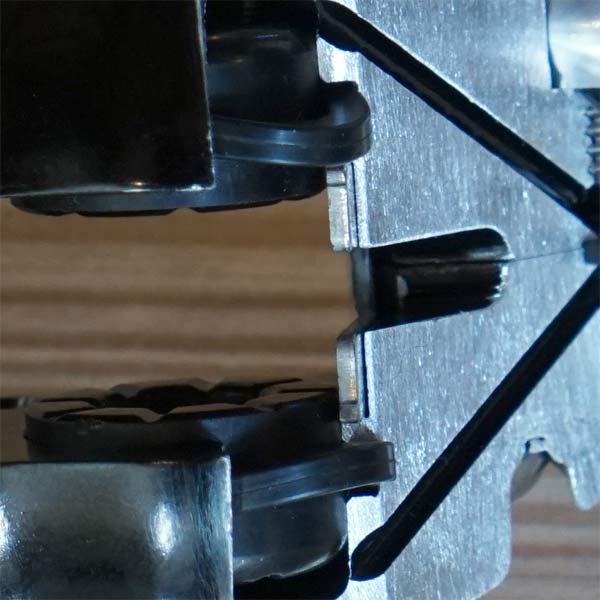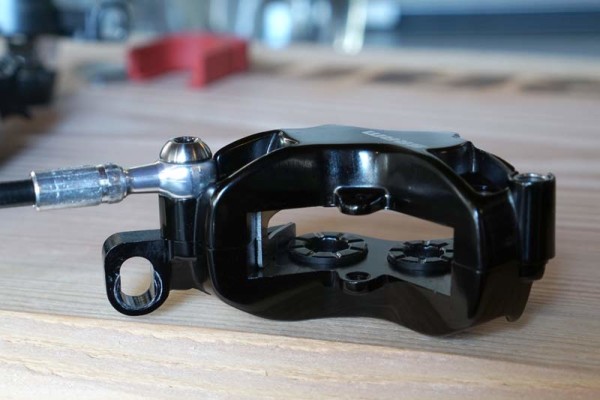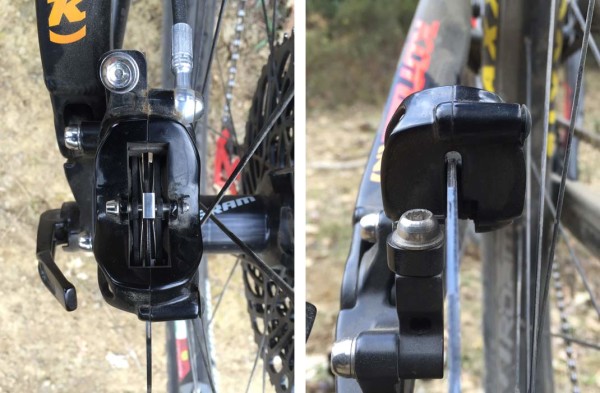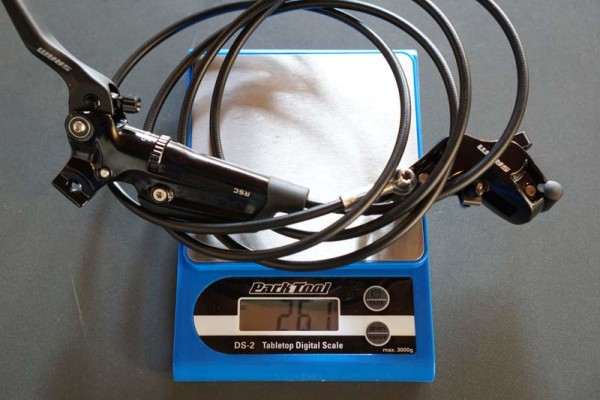Just over one year ago, SRAM reworked their already phenomenal Guide brakes to create a top-level Guide Ultimate. It came with the all-new S4 caliper, which offered improved heat management, easier bleeding and even better performance. Now, almost all of those upgrades make their way down the rest of the Guide lineup.
With the Ultimates, the big changes to the calipers came in the form of alloy pistons, molded piston seals and more space for air to move around the pads. The Ultimate’s still rule the roost with aluminum pistons that are turned and then given radial grooves before being sent out for a moly coating. The grooves limit the piston’s ability to retract past the seal, helping it stay at the ready as pads wear. The rest of the line -Guide RSC, RS and R- will all have full phenolic pistons, but that’s the only feature difference between them.
Here’s how the rest of the upgrades make the line even better…
Fluid lines are machined into the caliper body, ensuring even pressure on each side of the brake. Both sides run from the hose, behind the calipers, and then directly to the bleed port, with minimal opportunities for air to get trapped along the way. The S4’s bleed port is at the bottom of the caliper and is now Bleeding Edge compatible for a very easy, one-way bleed.
The molded seals are better than a cut o-ring because they can better control the size and shape to have a tight fit inside the caliper body’s groove and a tight seal around the piston. Note how the seals in the pic looked curved; that’s because they’re stuck inside an angled groove that forces them to rest against the piston at an angle, which allows for better control over piston movement.
The S4 calipers have a larger, more open “pad pocket”, helping air circulate behind the brake pads and giving it larger exhaust areas. Pistons are 14mm and 16mm.
Lastly, the pads get a stainless steel heat shield at the front of the backer plate, putting an extra insulating layer between the hot backer plate/pad and the caliper body.
Functionally, the levers are the same, with different materials and adjustment options separating RSC from RS from R. But, all get a slight update with reach adjust improvements. SRAM says adjustment detents are much more positive, and it stays in adjustment even when the levers are pushed forward. The contact adjust mechanism’s materials are upgraded to feel smoother and remain easy to turn at the extreme ends of the adjustment range. The lever blade kit is backwards compatible, so you could upgrade the reach adjust if you already own a set of first generation Guides.
SRAM had the new Guide RSC laying around, so we weighed the rear brake in at 261g. It’ll also be available in polished silver. Pricing for the new Guide brakes are:
- Guide RSC – $205 / €224 / £172 (reach & contact adjust, SwingLink, lever pivot bearings)
- Guide RS – $154 / €168 / £129 (reach adjust, SwingLink, lever pivot bearings)
- Guide R – $133 | €145 | £112 (reach adjust, DirectLink)
In addition to the alloy pistons, the Ultimate sets its self apart with titanium hardware and comes with their 2-piece Centerline-X rotor, and it’s available now. The RSC, RS and R will hit stores in June 2016.
